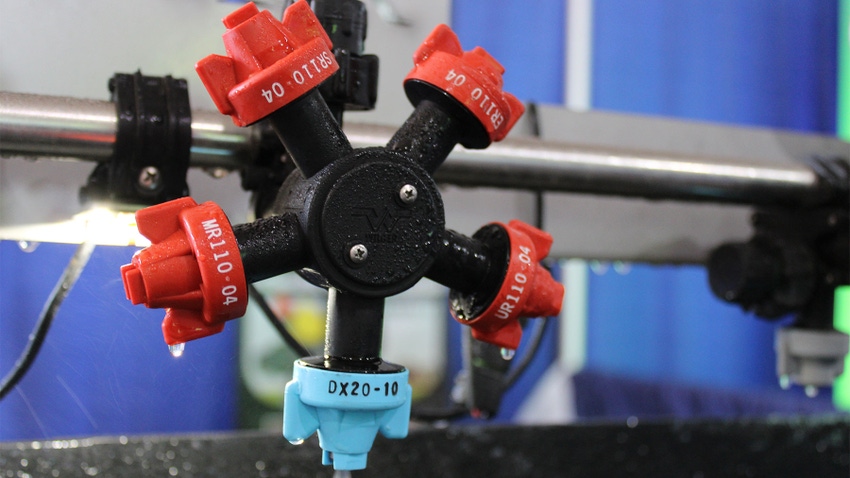April 3, 2024

Matching pesticides with the correct nozzle type can seem intimidating, especially when browsing through those nozzle charts with many colors and small print. Here’s advice for making the selection process simpler.
It’s important to ensure the nozzles you’re using are correct for the product being applied. Otherwise, you may end up losing time, money and potentially good relations with your neighbors. Finding the right nozzles starts with considering what products will be used.
What’s being sprayed?
What you’re spraying plays a large role in selecting the correct nozzle. After determining which product will be used, find out if the pesticide activity is systemic or contact. Contact herbicides do not move through the plant, so they require good spray coverage on the target plants to work effectively. Bryan Young, professor of weed science at Purdue, recommends medium to coarse or very coarse nozzles for contact herbicides.
When selecting finer nozzles for contact herbicides, avoid going too fine. This can lead to issues such as spray drift, the droplets staying aloft in the air or the droplets evaporating altogether before hitting the intended target. Increasing the spray pressure will not solve these problems.
“Some applicators will think, ‘I’m going to add more spray pressure so I can push the spray into the canopy,’” Young says. “My message is, you cannot push a fog, so boosting the pressure can create more problems than good.”
To achieve better coverage, Young recommends increasing carrier volume. He says 15 to 20 gallons per acre is ideal for contact herbicides, depending on what size spray droplet is being used.
A farmer example
Pete Illingworth, a farm crew member at Purdue, will apply his contact herbicides at 30 gallons per acre. “I want to drown them and make sure everything gets covered,” he says.
Illingworth explains this is possible for him because he sprays 500 acres, so he doesn’t have as much acreage to cover. He typically applies atrazine and Corvus for preemergence on corn, and later he applies Buctril and Capreno for postemergence. In beans, he applies Zidua Pro for preemergence, and Liberty and Zidua SC for post.
The nozzle that Illingworth used to swear by was a Hypro flat fan at 110 degrees. This nozzle allowed him to spray a large volume and achieve good coverage. Now, Illingworth likes using an air induction-type nozzle set on 15-inch spacings because it still delivers good coverage while cutting back on spray drift.
Finding favorite nozzles
While coverage is important with contact herbicides, total coverage is not necessary when applying systemic herbicides. Young recommends coarse to extremely coarse droplets for those products. He says to avoid going beyond the extremely coarse size.
“Ultra-coarse droplets are really nobody’s friend for pesticide activity,” Young explains. With larger droplet sizes, you start to compromise adequate coverage. While systemic herbicides don’t require the thorough coverage that contact herbicides do, it is still important for a minimum number of droplets to be intercepted by the target weeds. With that said, some herbicide labels require the use of ultra-coarse droplets to mitigate spray drift.
Young explains that with the herbicide diversity today, you typically won’t find one nozzle that works for all your products. He says AIXR nozzles or similar are the most popular. They are air-inducted nozzles that can maintain their pattern over a wider pressure range.
He sees twin fan nozzles gaining traction as farmers move to using more contact herbicides and needing more thorough spray coverage. For now, he explains that nozzle selection can only be effective if it meshes well with how one sprays.
“I can’t emphasize enough that how they spray is important because the pesticide you pour in the tank isn’t going to work unless it’s effectively applied,” Young says. “The better you are at applying it, the more effectively it will perform.”
About the Author(s)
You May Also Like






